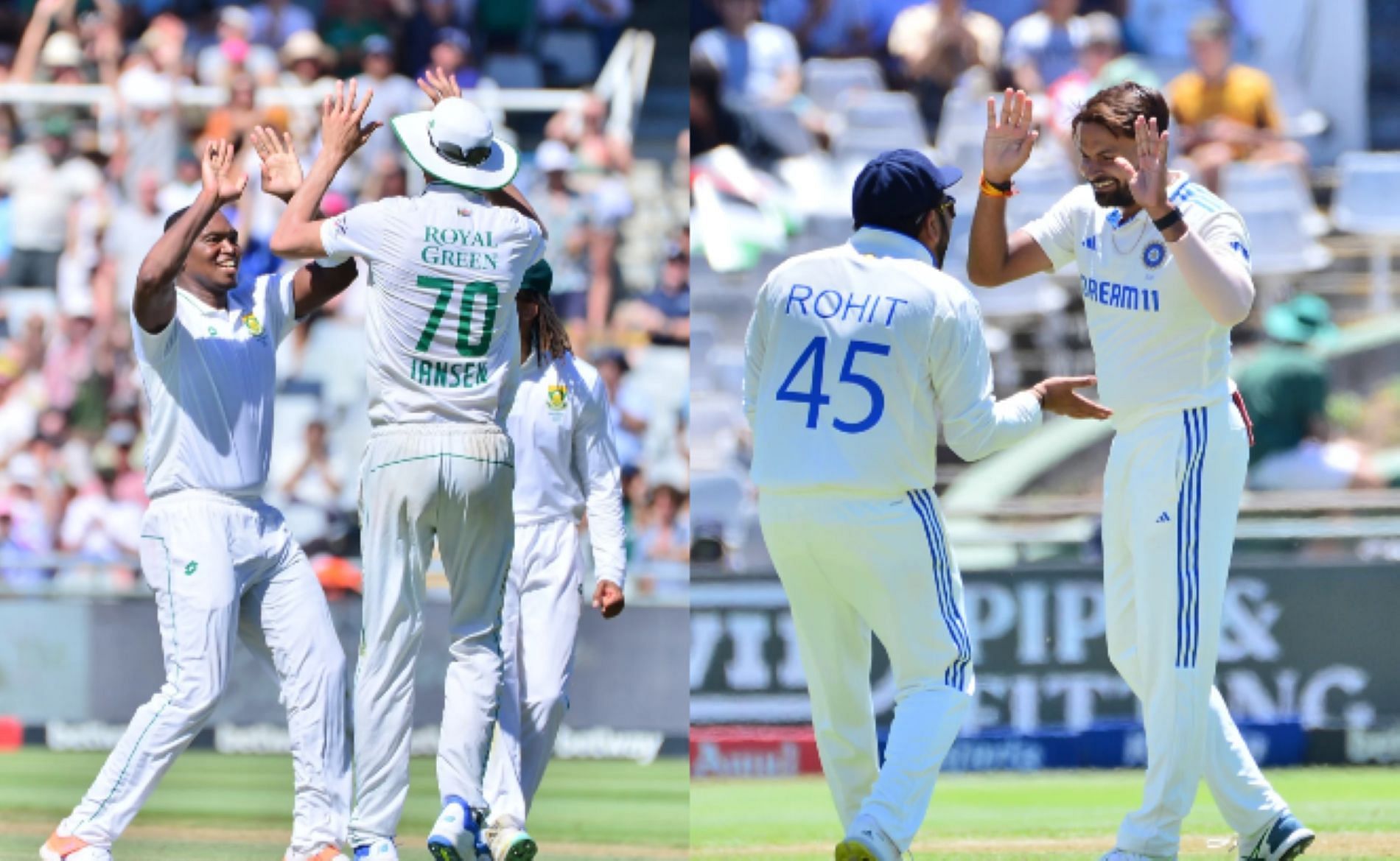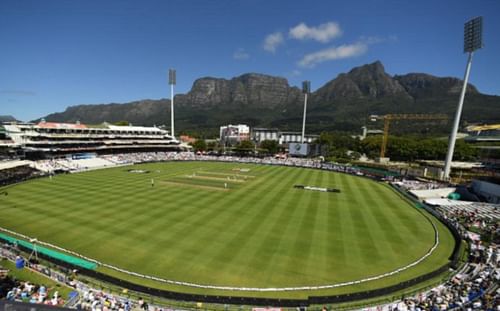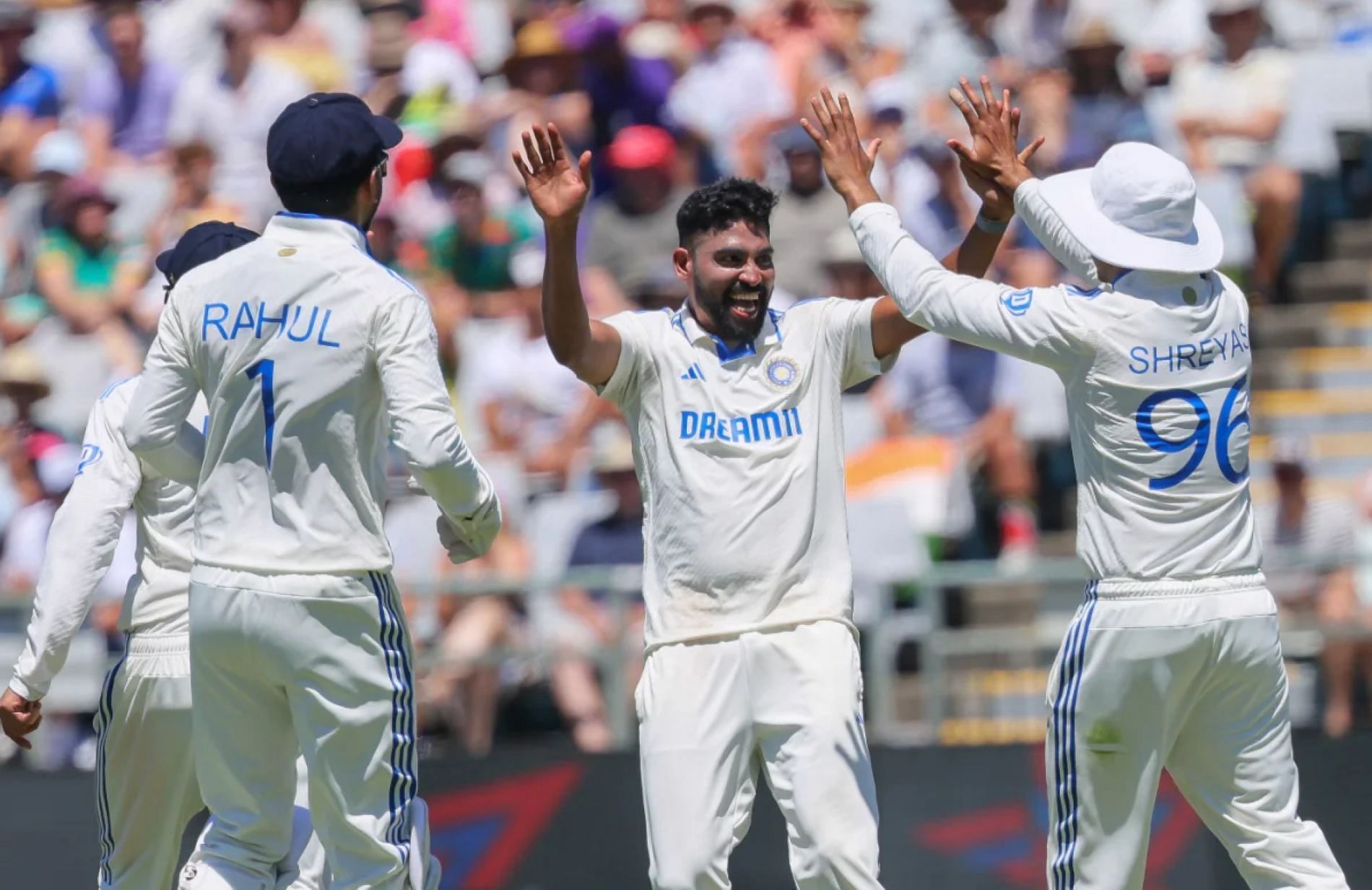
India or South Africa - which team is on top after Day 1 of 2nd Test in Cape Town
A parade to the dressing room defined Day 1 of the second Test between India and South Africa at Cape Town.
On a wicket with plenty for the bowlers, the seamers from both sides made merry to keep a lid on the batters. It was the second time a Test match in Cape Town saw 23 wickets fall in a single day, with the South Africa-Australia 2011 game being the other.
The tally was also the joint-fifth highest in a day and second most on an opening day in Test history.
Pacer Mohammed Siraj ripped apart the South African batting in the first session with figures of 6/15 to bowl out the hosts for their lowest Test score since readmission of 55. In response, India seemed to be coasting at 153/4 before one of the most shocking collapses saw them lose their final six wickets without a run added.
Bowled out for 153 with a lead of 98 runs, the visitors picked up three Proteas' wickets to reduce them to 62/3 in their second essay at stumps on Day 1. Despite the penultimate innings being in progress, the game is yet to witness a single half-century, with Virat Kohli's 46 being the highest score thus far.
Though South Africa are still 36 runs behind with only seven wickets in hand, India will have to bat last with the pressure of an 0-1 series deficit.
With the two-Test series headed in fast-forward mode to its climax, let us figure out which team is on top after the opening Day at Newlands.
Noteworthy facts to consider about recent Tests in Cape Town

The Cape Town wicket is living up to its billing of producing results in Test matches, with only two games in the last 14 ending in a draw.
It is also one of the few venues where the toss factor is removed, with the 12 result games split between the team batting first and chasing in the fourth innings. While the balance between bat and ball remains similar through all four innings, there have been several instances where chasing in the final innings becomes easier.
The last time India and South Africa met at the venue in 2022 saw a low-scoring game end, with the hosts chasing 212 comfortably by seven wickets. However, it is worth mentioning Days two and three remain nightmarish for the batters before the venom in the pitch goes off, making the final days of batting relatively easy.
A pitch similar to the ongoing game would be the famous 2011 South Africa-Australia encounter, which saw 23 wickets fall on Day 2. Yet, a contrasting Day 3 followed, with the hosts chasing 236 by eight wickets.
India are considerably ahead heading into Day 2

Without factoring in the venue and the wickets, it is a no-brainer that the team that leads by 36 runs with the opposition three down in their second innings in a low-scoring encounter is well ahead.
Add to that the Cape Town wicket, which, unlike Asian tracks, does not deteriorate and only improves the longer the game goes on, and Team India is undeniably on top. However, they will do well to remember South Africa's terrific record in Cape Town, winning 19 and losing four in 29 Tests.
They will also realize their frailties chasing in the fourth innings with an inexperienced batting lineup and a long tail.
Yet, the Rohit Sharma-led side will be aware of the lack of experience and pedigree in South Africa's batting, especially with Dean Elgar already back in the shed. Adding Keshav Maharaj into the playing XI means the hosts also have a longish tail, with Marco Jansen batting at No.7.
Even if the Proteas bat out of their skin and set India a target of over 150 or 200, they would get to bat in the final session of Day 2 and Day 3 when the pitch traditionally becomes better for batting.
Considering the venue history and the match situation, it would be a miracle of epic proportions, aided by an Indian collapse, if South Africa wins the second Test.